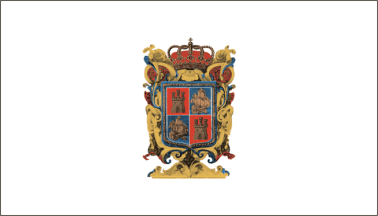![[National Flag of Mexico and Campeche State Flag]](../images/m/mx.gif)
![[Official Campeche flag]](../misc/oooxxx.gif)

Last modified: 2009-05-24 by juan manuel gabino villascán
Keywords: mexico | campeche | unofficial | coat of arms |
Links: FOTW homepage |
search |
disclaimer and copyright |
write us |
mirrors
![[National Flag of Mexico and Campeche State Flag]](../images/m/mx.gif) |
4:7![[Official Campeche flag]](../misc/oooxxx.gif) |
|
by Juan Manuel Gabino Villascán, August 31, 2001 |

|
4:7![[Non-official proportions]](../misc/_~~.gif) ![[Alternate flag]](../misc/fis_alte.gif) ![[Defacto flag]](../misc/fis_defa.gif) ![[One or more variants under the same basic design]](../misc/fis_vari.gif)
|
|
by Juan Manuel Gabino Villascán, September 2005. Coat of arms from: Banco de México See: Coat of arms on white background: unofficial flags |
INEGI, SEP and Banco de México
Reported by Juan Manuel Gabino Villascán, September 2005.
According the article 5º of the Campeche State Constitution, "the official mandatory
symbols for the State are the National flag, anthem and
Coat of arms, as well as the State's Anthem and
Coat of Arms."
The same article states that "shall not be neither other flags, anthems,
nor coats of arms, and the usage of the National Symbols shall be regulated by
Federal rules."
CAPÍTULO II
De los Símbolos OficialesARTÍCULO 5o.- La Bandera, el Himno y el Escudo Nacionales así como el Himno y el Escudo propios del Estado, son los símbolos obligatorios del mismo. No habrá otras banderas, otros himnos ni escudos de carácter oficial, y el uso de los símbolos nacionales se sujetará a lo que dispongan los ordenamientos federales.
Quoted and translated by Juan Manuel Gabino Villascán, July 20, 2002.
.gif)
By Banco de México
September 2005.
"El extremo superior derecho y el inferior izquierdo tienen un campo de azur (azul) con un navío de plata y dos áncoras (anclas) cada uno, de igual color sobre leves ondas de agua. Las partes superior izquierda e inferior derecha contienen un campo de gules (rojo) y una torre de plata almenada en tres partes.
El escudo está enmarcado por el cordón de San Francisco, además de una bordura de oro y en la cimera una corona real. Los campos de gules (rojo) significan valor, atrevimiento e intrepidez. Las torres almenadas significan grandeza y poder en la defensa de una plaza. Los navíos demuestran la condición de puerto marítimo de altura. La plata de las figuras significa integridad, firmeza y vencimiento. Los campos de azur (azul) indican pureza de sentimientos, lealtad, honestidad. La corona de la bordura, grande-za y majestuosidad y, finalmente, el cordón de San Francisco significa que la villa estaba dedicada al culto de San Francisco de Asís."
Banco de México, September 2005.
Anything below this line was not added by the editor of this page.